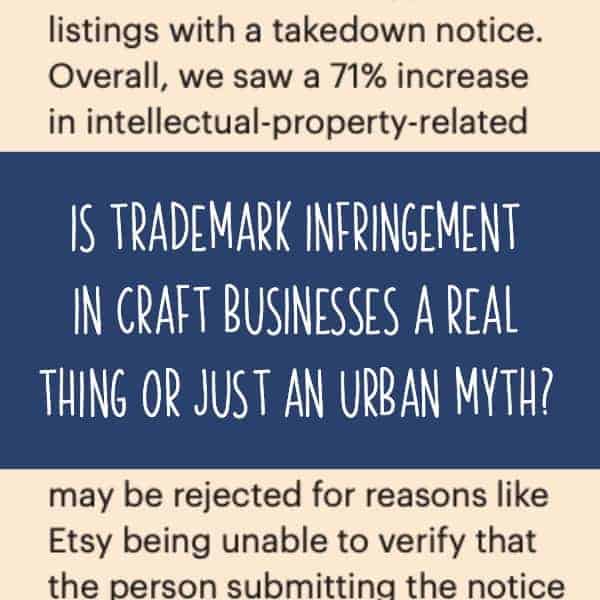Understanding the US Copyright Act of 1976 as a Crafter
Affiliate Disclosure: As an Amazon Associate I earn from qualifying purchases. Additionally, I may get commissions for purchases made through other affiliate links in this post.
For the most part, trademarks are pretty easy to understand. People or corporations can register a trademark with the US Patent and Trademark Office. If it is approved, the trademark is listed in a public database called TESS and we can search it for trademark concerns before creating products for sale.
Copyrights seem more difficult to understand because we can’t look something up. Let’s dig into the current US Copyright laws today – and how they pertain to crafters. We will only be talking about works that were created after January 1, 1978.
What is the US Copyright Act of 1976?
The US Copyright Act of 1976 is the law that governs current copyright practices in the United States. It was signed into law in October of 1976 and went into effect January 1978. The law has been amended (added to/changed) over the years. If you’d like to read the entire text of the law, click here. Otherwise, continue on for my breakdown of what you need to know.
What are the Main Points of the US Copyright Act of 1976?
The US Copyright Act of 1976 details what kinds of work are protected. They include:
- Literary
- Musical
- Dramatic
- Pantomimes
- Choreographic
- Pictorial
- Graphic
- Sculptural
- Motion pictures
- Audiovisual
- Sound recordings
- Architecture
- For crafters, this includes designs we create.
The US Copyright Act of 1976 gives rights to copyright holders. The rights include:
- The right to reproduce the work.
- The right to create derivative works.
- The right to distribute copies.
- The right to perform the work.
- The right to display the work.
The US Copyright Act of 1976 sets a term for the length of protection. Through amendments in the late 1990’s, works are copyrighted for the author’s life plus seventy years for general copyrights. Works created by an employee for their employer (work for hire) have a different length of protection.
The US Copyright Act of 1976 tells us that to transfer a copyright from one person to another, it must be in writing.
Perhaps most important for crafters, the US Copyright Act of 1976 tells us that copyrights do not need to be registered to be protected. Put simply, your original designs are protected automatically when you create them. This also means that something you find on the internet, or in a magazine, or anywhere else is copyrighted to the person who created it. Legally, if you’d like to use it, you would need to contact the creator. The Act further lays out that if you would like to take legal action against someone infringing on your copyrighted materials, you would need to first have the material registered with the US Copyright Office. Registration starts at $35 and goes up. You can find more information at this link.
Lastly, the US Copyright Act of 1976 details the terms of Fair Use. Fair Use is a complicated topic that doesn’t apply to crafters in most situations and will not be covered here.
Now that you understand the basics of copyrights in the United States, go forward and create!
Was this information helpful? Share the image below on Pinterest:

Since 2015, Christine Schinagl has been helping crafters start and run craft businesses through her blog, Cutting for Business. As a Silhouette and Cricut crafter herself, she has a unique take on what works and what doesn’t work in the craft business world. She also enjoys teaching other crafters how to create digital SVG designs, available through the Design with Me series.





